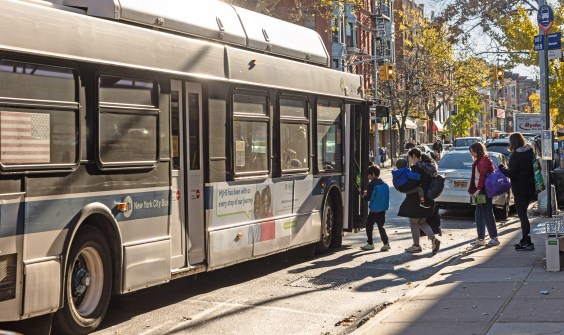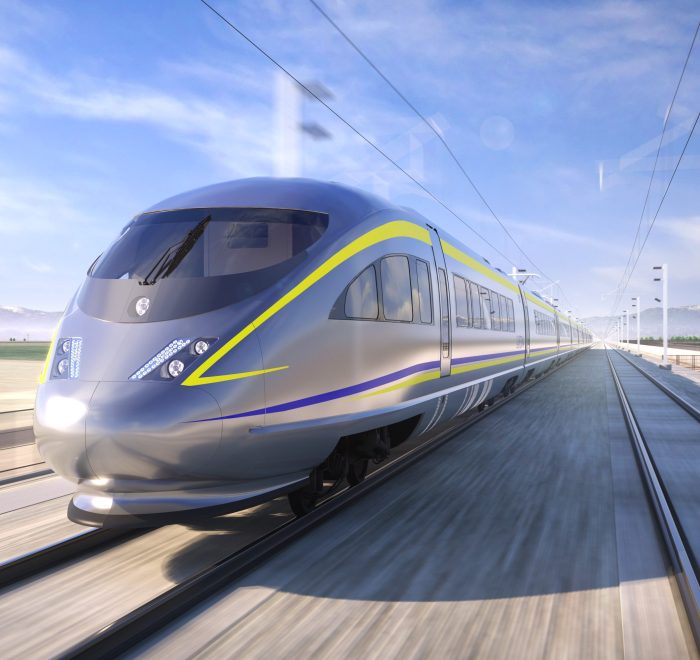One of the programs funded by California's cap-and-trade system is the Low Carbon Transit Operations Program, which was created to help transit agencies help the state meet its greenhouse gas emissions reduction targets. The program provides money for increasing or creating new services, expanding facilities, and buying new equipment such as electric vehicles, the idea being that better services will encourage more riders, and cleaner vehicles – well, you know.
Caltrans recently allocated $34 million to 125 projects under the program. Whatever you compare this to—the total amount of cap-and-trade funding, or the amount of funding going to repair highways in California—it is not a lot of money. These 125 projects are relatively small investments but they have the potential to make an immediate difference in local, and global, emissions.
And as required by law, a portion of the money from any cap-and-trade program must go to benefit what the state defines as disadvantaged communities (DAC), those that bear the brunt of pollution costs in terms of air quality and health impact. More than three-quarters of this recent allocation—85 percent—will benefit a DAC under the current guidelines.
Note that the definition of what constitutes a “DAC” is the subject of much ongoing discussion, as is how to define and quantify a "benefit" to that community. Nevertheless many of these projects will increase and improve bus and rail transit through and to communities throughout California, in both rural and urban areas.
A complete list of the allocations is available here [PDF]--below are some highlights from the list:
- The largest award--nearly $6 million--went to Southern California's Metrolink Gold Line Foothill Extension to provide service that will “directly link disadvantaged communities in Monrovia, Duarte, and Irwindale.”
- SF Muni will get nearly $4 million to expand service on the 9R San Bruno Rapid Line in San Francisco, which “serves two disadvantaged communities in the Tenderloin and South of Market districts.”
- BART will get $2 million to buy rail cars to relieve overcrowding on some of its shorter trains, and since BART serves so many different communities it also got credit for benefiting DACs as well.
- AC Transit in the Bay Area will get several large allocations: $1 million for Rapid Bus Corridor improvements in Oakland, including a transit lane on Telegraph Avenue, and close to $1 million for BRT improvements between Oakland and San Leandro.
- The Bay Area's Metropolitan Transportation Commission received more than $1 million to upgrade and modernize the Clipper fare card system, which is used by many Bay Area transit agencies.
- San Diego will get a million and a half to buy new light rail vehicles so it can operate longer trolleys.
- Orange County Transportation Authority will get money to add three-bike racks to its buses, and to launch a fare discount program for students at Santa Ana College.
In addition to OCTA, other agencies were also allocated money for fare discount programs aimed at increasing ridership and reducing driving. Some of the programs will provide free or reduced fares for local college students, some for the general public. Those areas include Mendocino, Redwood Coast, Livermore Amador Valley, Monterey-Salinas, Mountain Transit, Victor Valley, Merced, the cities of Arvin and Shafter, and the counties of Trinity, Butte, Lassen, Colusa, Yolo, Santa Barbara, Kings, and Nevada.
Those fare program awards range from about $6,000 to $223,000, depending on the size of the agency, with most small agency awards well below $50,000—OCTA's $886,000 award is far and away the largest such project, befitting the size of the agency and the number of riders affected.
The smallest of all the allocations on the list was for $2,400, which will go to Placer County for bus stop improvements. Similarly, the city of Chowchilla will receive a little over $5,000 to build decent places for people to wait for the bus. These small improvements are a crucial step towards making it easier, more pleasant, and reasonable to travel by transit, especially in rural areas where distances are far and roads are not built for people on foot.
Other awards include money for solar panels, improved bus stops and transit centers, increased hours of service, new and extended routes, bike racks and parking, and improved technology such as universal fare cards.
In addition, the following agencies were awarded funds to buy new clean vehicles:
- Caltrain will buy electric engines as part of its overall electrification project ($500,000)
- San Mateo will buy ten electric buses ($300,000)
- Golden Empire will buy three zero-emission buses ($245,000)
- Santa Clara will buy an unnamed number of zero-emission buses (a little over $1 million)
- Foothill will buy thirteen new electric buses ($240,000)
- Watsonville, SolTrans, Fresno, Wasco, Antelope Valley, and Sonoma will each buy one electric bus





